Last week at WordCamp Europe, I found myself thinking about what makes a good conference badge. I thought I’d collect my thoughts for the purpose of feedback and to see if others felt the same way.
Note: planning conferences is hard. I applaud the WordCamp Europe team for trying something new with their badges. But, there were some things missing from this year’s badges that I realized were important to me. I wanted to detail what they are and why they are important to me.
WordCamp Europe 2019 Badges
If you were fortunate enough to attend WordCamp Europe this year, here is what your badge would have looked like:
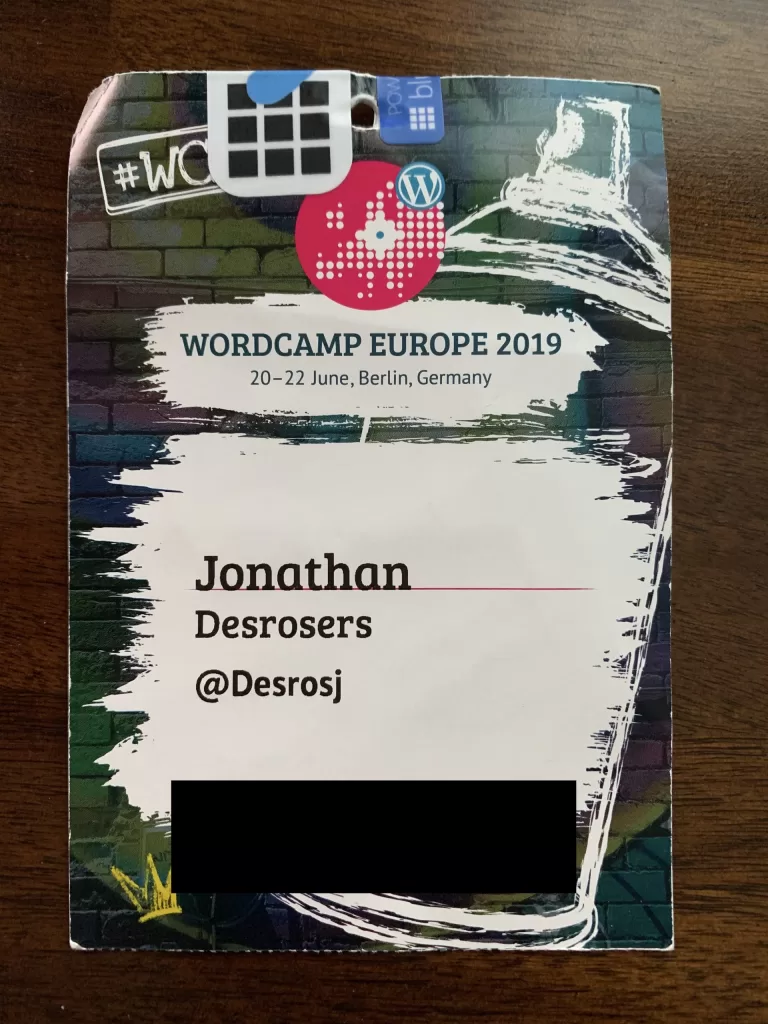
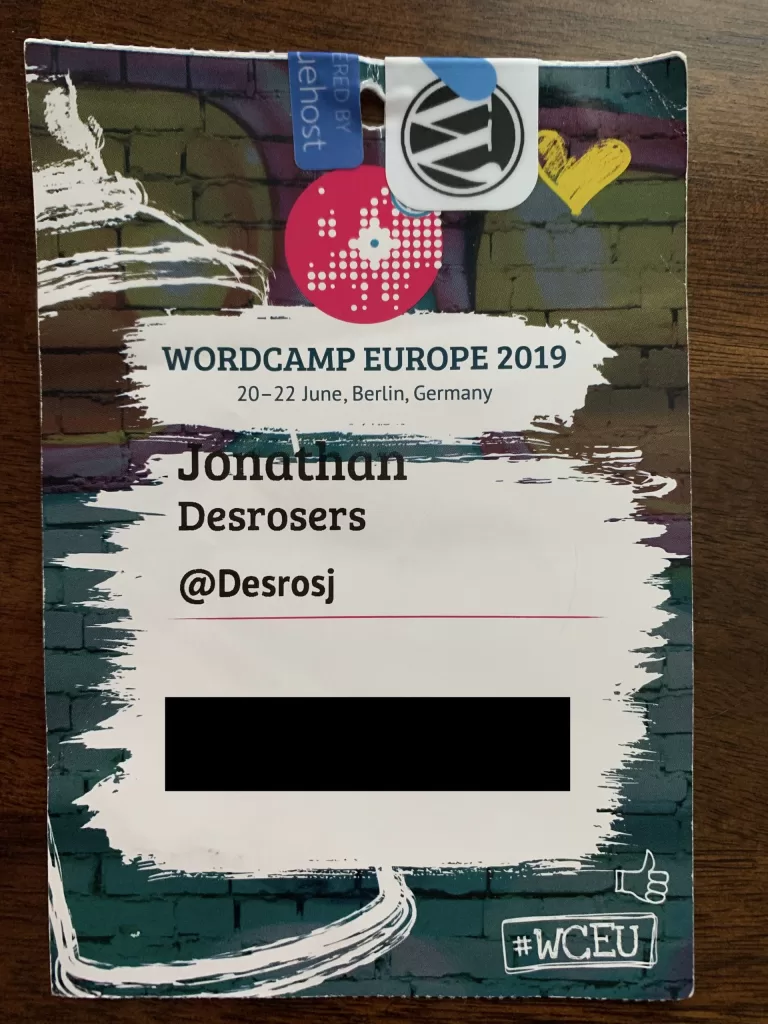
Here’s a breakdown of what I liked and what I did not like about the badges.

Pro: Less Wasted Material
This year, the badges were printed at the registration table as you checked in. It’s not uncommon for 10-20% of registrants to no-show because of the low cost of WordCamps. At WordCamp Europe, over 2,700 registered attendees out of over 3,200 total tickets sold attended (around 84%). The event was able to avoid wasting the material for 500 badges by not printing badges ahead of time.

Pro: Less Volunteer Time
Because badges were not printed ahead of time, there was no need for volunteers to spend time alphabetizing and organizing the badges. The time spent manually going through badges looking for a specific attendee’s badge when checking in was also eliminated.
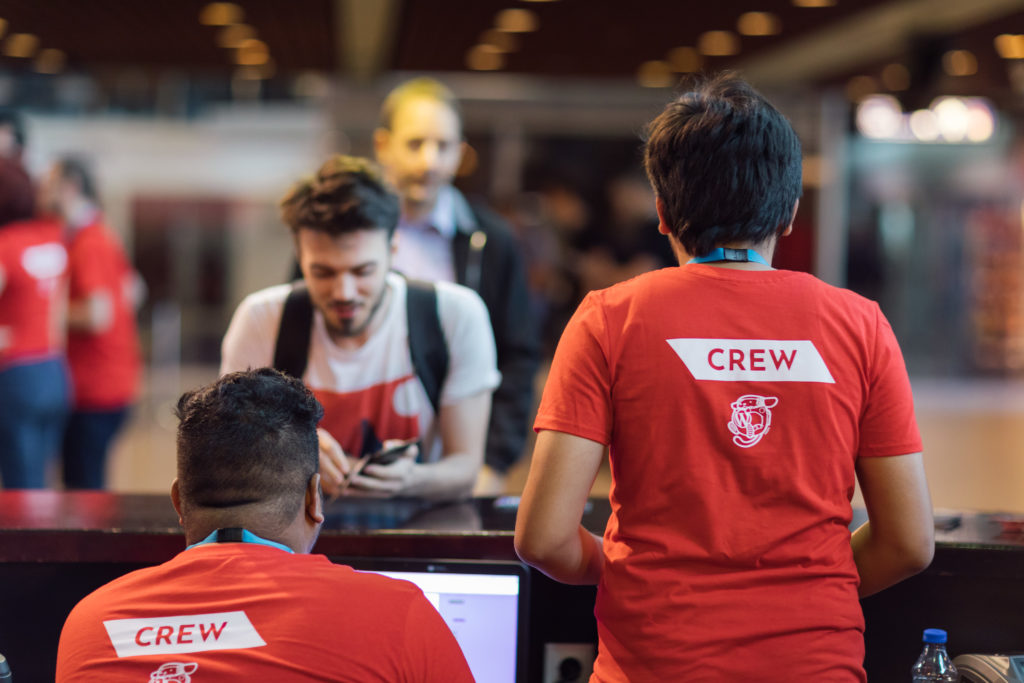
Pro: Easier Check In
Because the badges were printed on demand, there was no need to create lines based on letter ranges (A-D, E-H, etc.). This is often hard to accomplish because the signs for each line are usually on the table itself, which is hard to see from the back of the line. Instead, attendees could hop into any line and get checked in.

Pro: Twitter Account
Besides trading business cards or emails, Twitter handles are, in my opinion, the easiest way to connect with a person to continue conversations after a conference. When this is included on a badge, it’s easy to follow them in the moment, or to take a photo of their badge to follow up later.
Con: Durability
Unfortunately, my badge ripped halfway through Contributor Day. I was able to perform minor surgery with some stickers to reinforce the hole, but this is an issue I always seem to encounter with paper badges.
I have included a photo of my WordCamp US 2018 badge. This badge was made of plastic and held up great to the 3 day conference. I realize that plastic is not the most sustainable material, so I am not advocating for plastic badges. But this type of badge is much more durable.
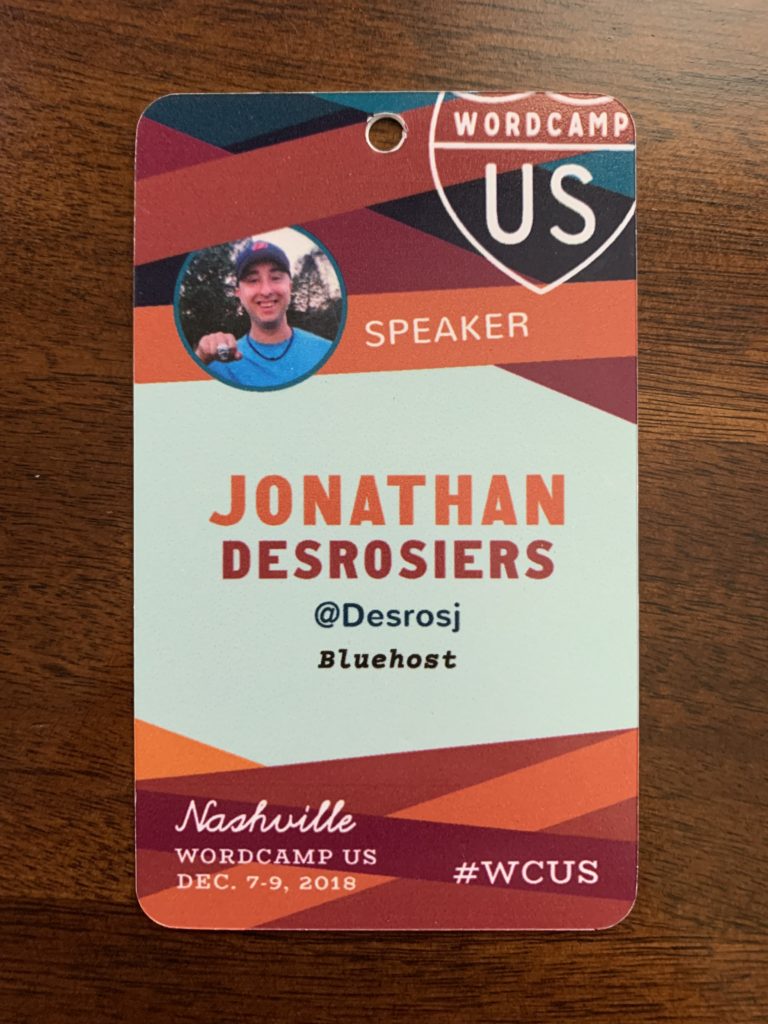
Con: Mysterious Barcode
The black box on my badge is covering a barcode that was printed on everyone’s badge. It still is not clear to me what the purpose of the barcode was or what information was attached to it. The only time my barcode was scanned was when I visited a few sponsor booths. But, even then, the explanations were different and unclear.
One sponsor asked to scan my badge so that “they knew who had come by to visit” and another said that scanning my badge allowed them to “reach out to me after the conference.” If the barcode gave sponsors access to any personal information (such as email), I would have liked that to be more clear. I would not have allowed them to scan my badge if the intention was to add me to a newsletter or marketing list.
I am not opposed to barcodes on badges (I think this could be really useful for checking into different conference related events or claiming t-shirts, etc.), but they should not provide access to personal information.
Con: Misprint
The printing on my badge was a bit off. On one side, my name was printed a bit too high which made it hard to read. On the other side, the barcode was printed off the white part. If the barcode were more important, this could have caused me problems. I also misspelled my name when I registered. This was totally my fault, but it got me thinking about ways attendees could confirm their information before finalizing.
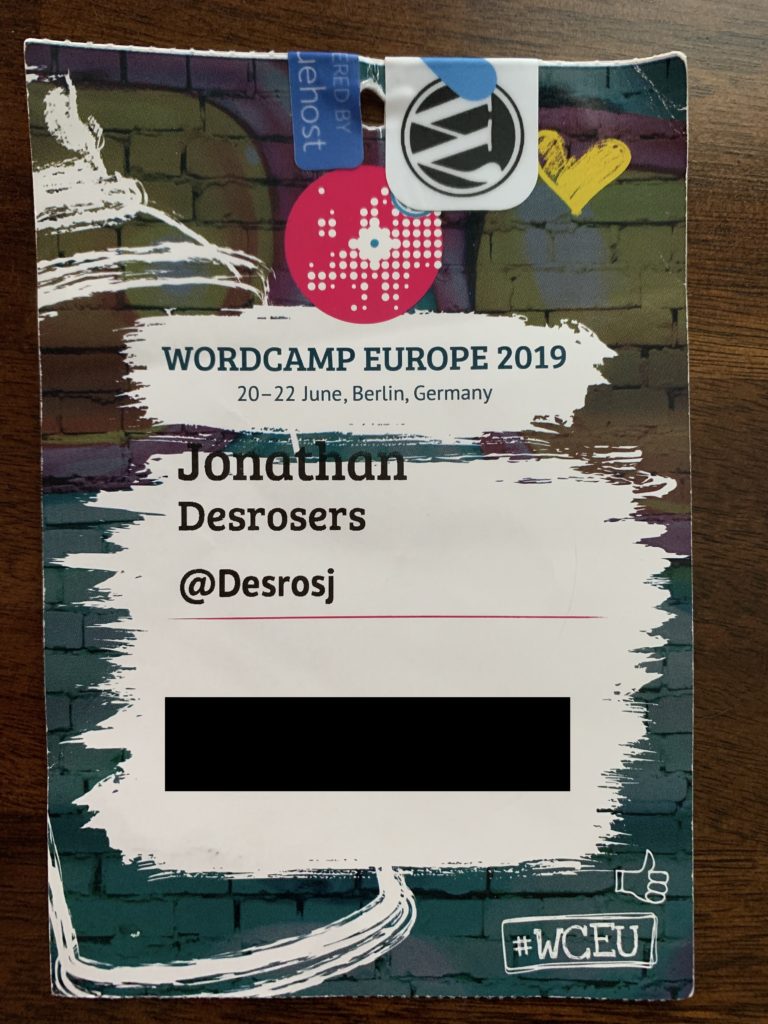
Con: No Avatars
This is a huge one for me. I am a very visual person. I spend countless hours interacting with people on Slack, Trac, Twitter, etc. Many times when I start talking to someone at a conference it is hard to connect the dots of who person is. But, when avatars are on badges, I almost instantly realize who they are and make a mental connection to past conversations because an avatar is something I am already very familiar with.
Con: No Companies
The badges also did not have a company listed. I often find this useful for starting conversations. Sometimes this information combined with an avatar also helps me make a mental connection to a person.

Summary
In summary, here are the components that I feel make a good conference badge that are most important to me in no particular order.
- Name
- Avatar
- Durability
- Company
- Twitter handle
- No sensitive personal information (like email), or a way for sponsors to access that.
What badge elements are important to you and why? Do you have an all time favorite badge design? Share below!
Photo credits: Bas Emmen, Jon Tyson, Sara Kurfeß, and Kevin Jesus Horacio on Unsplash. WordCamp Europe 2019 press kit.
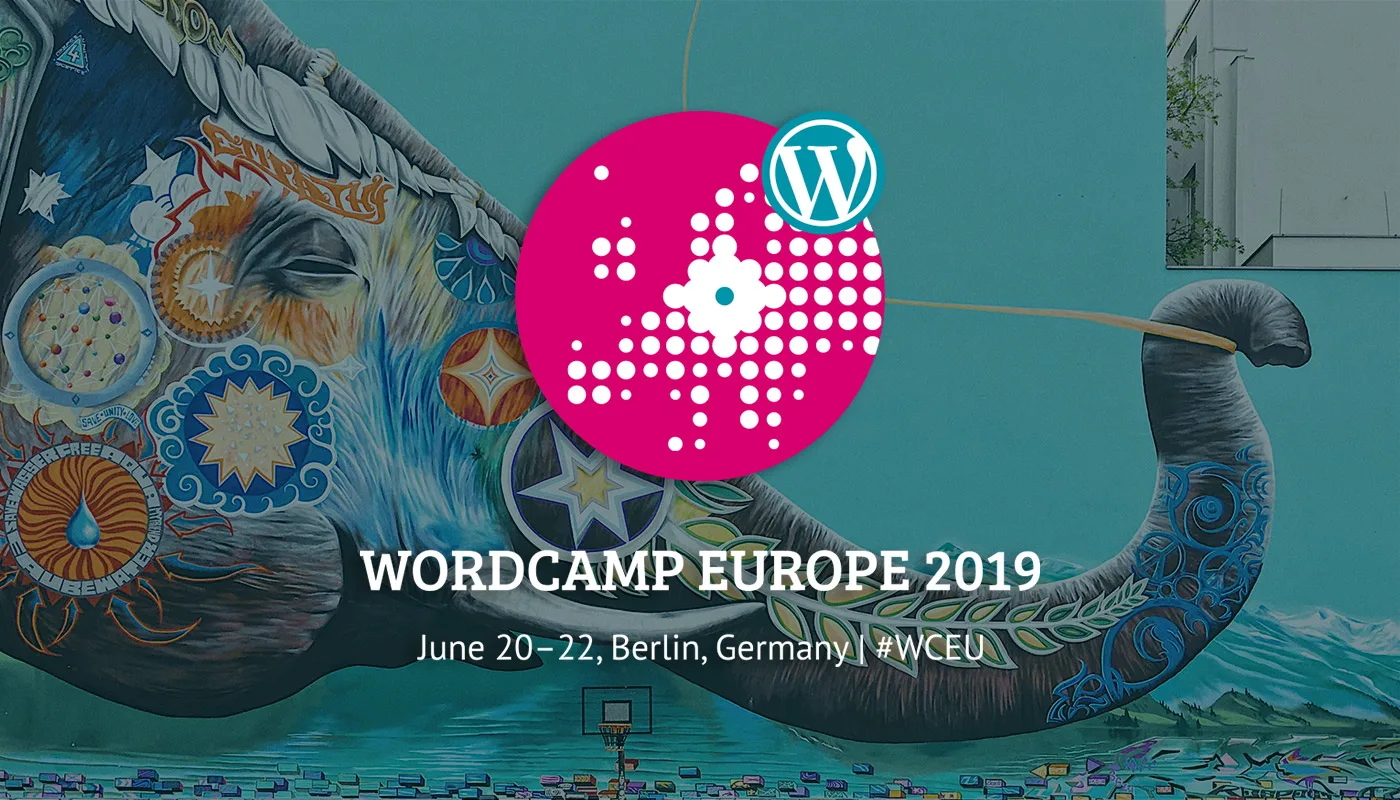
Leave a Reply